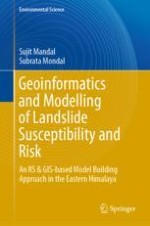2019 | OriginalPaper | Buchkapitel
7. Machine Learning Models and Spatial Distribution of Landslide Susceptibility
verfasst von : Sujit Mandal, Subrata Mondal
Erschienen in: Geoinformatics and Modelling of Landslide Susceptibility and Risk
Aktivieren Sie unsere intelligente Suche, um passende Fachinhalte oder Patente zu finden.
Wählen Sie Textabschnitte aus um mit Künstlicher Intelligenz passenden Patente zu finden. powered by
Markieren Sie Textabschnitte, um KI-gestützt weitere passende Inhalte zu finden. powered by
